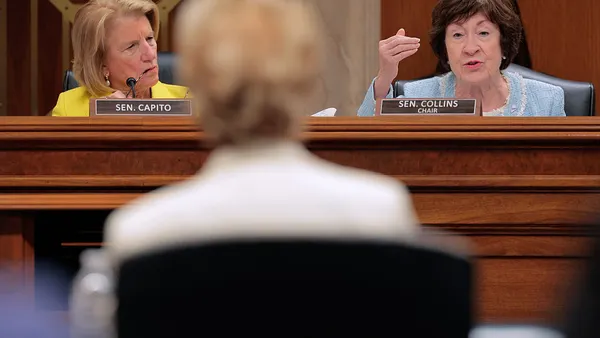Dive Brief:
- According to the 2021 Building A Grad Nation report from the America’s Promise Alliance, an estimated 3 million students stopped going to school altogether when the COVID-19 pandemic forced a transition to virtual learning.
- The greatest impacts were felt by traditionally underserved groups, including students of color, English learners and those from low-income families.
- According to the report, early evidence doesn't show a significant drop in graduation rates for the class of 2020, though the nation is off-track to reach a 90% graduation rate goal. The rate hit an all-time high of 85.8% in 2019, but the report cautions that without focus from states on sustaining improvements for student groups including English learners and those with disabilities, that number could become a high-water mark.
Dive Insight:
While it’s still unclear how the pandemic will ultimately affect graduation rates in the long run, concerns abound as to how much the transition to remote learning and outside-of-school factors will impact graduation rates, chronic absenteeism and more.
Students who graduated in 2021 were juniors by the time the pandemic struck, and it’s possible most were already well on their way to completing their required classes. But questions remain as to how much remote learning will impact long-term attendance and graduation rates of younger cohorts.
Though current dropout rates aren’t available yet, rising absenteeism, falling grades and shrinking enrollment are early warning signs. Thousands of students reportedly dropped out of school during the pandemic, including many teens who did so to work so they could help support their families amid job losses. Pre-pandemic, the dropout rate was declining and had reached about 5% in 2018. Many families also relocated or transitioned their students to private schools or homeschooling.
Though a goal of reaching a 90% graduation rate by 2020 wasn’t hit, numbers remained on the upswing prior to the pandemic. The upward trends were noted particularly for Hispanic students, rising from 71% to 81.7% between 2011 and 2019, and Black students, up from 67% to 79.6% during the same time period. The graduation rate of students in low-income homes also rose from 70% to 80%.
Correction: A previous version of this article featured outdated graduation trend data. It has been updated to reflect the most current numbers available.






 Dive Awards
Dive Awards






